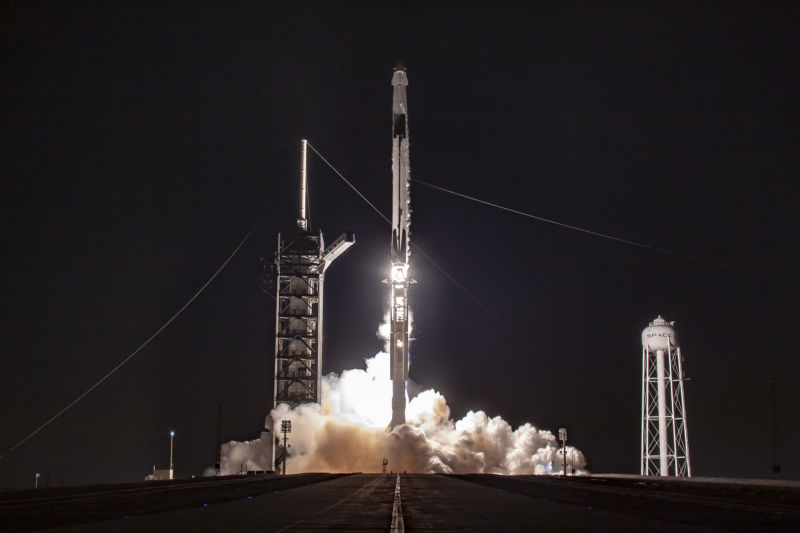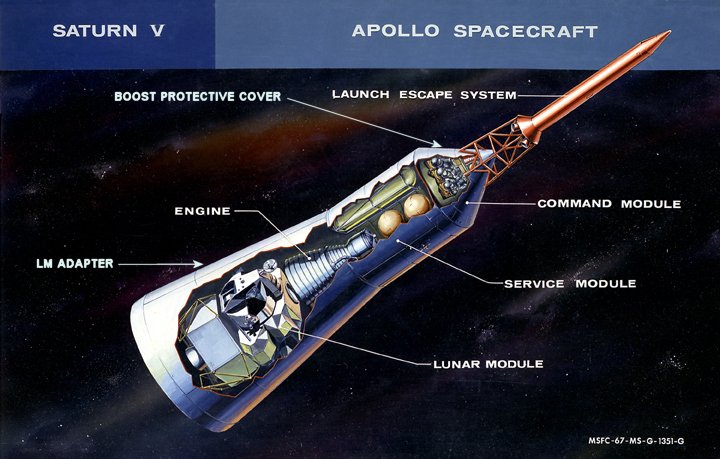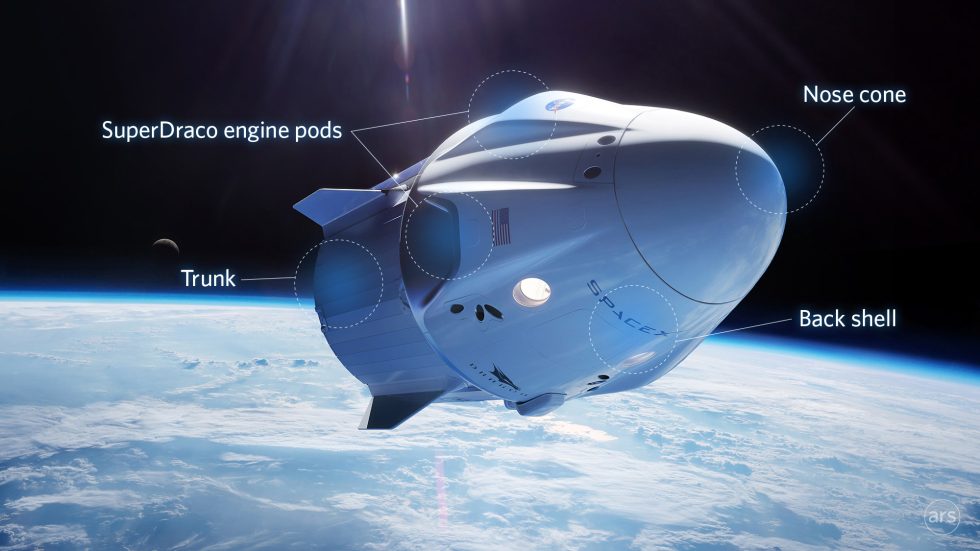
Thus far, the flight of SpaceX’s Crew Dragon to the International Space Station has gone just about as well as one might hope.
It started when the spacecraft’s Falcon 9 rocket hit its instantaneous launch window early on Saturday morning, streaking into the black Florida sky as if it were the world’s greatest firework. Once in space, Dragon popped open its nose cone, called home, and began firing its thrusters as anticipated.
Then, on Sunday, the spacecraft aced one of its most important tests by slowly catching up to the International Space Station, carefully aligning with its docking port and smoothly latching on board. Two hours after Dragon docked, astronauts entered and found all well within.
Throughout all of this, however, the most challenging part of Dragon’s mission remained before it. This week after undocking from the station early Friday morning, the spacecraft will burn its thrusters to perform a deorbit burn, essentially slowing its velocity enough to nudge itself out of orbit and begin the process of falling back to Earth. This will occur at around 7:50am ET. Splashdown in the Atlantic Ocean should come at about 8:45am ET.
As the vehicle descends, its speed must slow from a starting point of about 27,000km/hour (~16,777mph) as it steadily encounters thicker atmosphere. Temperatures outside the capsule will exceed those on the surface of the Sun, testing Dragon’s heat shield. Rather than breathing fire, Dragon will attempt to survive it.
The two most critical moments will come during entry to Earth’s atmosphere and near the end of the descent when Dragon’s four main parachutes deploy. At the top of the atmosphere, there is a small chance the vehicle will begin to roll uncontrollably due to Dragon’s design, since the capsule is not symmetrical to the placement of engine thrusters. And with Dragon's parachutes—the last, critical step to arresting its fall—everything just has to work.
-
The SpaceX Crew Dragon capsule approaches the International Space Station to dock for the first time.NASA
-
The Dragon is seen on Sunday, approaching the International Space Station.David Saint-Jacques/Twitter
-
With its nose cone open, Dragon reveals its docking mechanism while approaching the station's Harmony module.NASA
-
Another view of Dragon approaching the station.NASA
-
Russian cosmonaut Oleg Kononenko snapped these images as Dragon neared.Roscosmos
-
Check out that detail.Roscosmos
-
Before going into Dragon, the astronauts on board station donned gas masks as a precaution.NASA
-
Here, Canadian David Saint-Jacques and Kononenko mug for the camera at the entrance to Dragon.NASA
-
Kononenko gets ready to test the interior of Dragon.NASA
-
After Celestial Buddy was liberated from Dragon, it enjoyed a view of ... itself.NASA
-
The astronauts sure were having some fun with Celestial Buddy.NASA
“There’s a high pucker factory with re-entry,” said Garrett Reisman, a veteran of two space shuttle landings. Still a consultant for SpaceX, Reisman helped lead the design of Dragon for the company from 2011 to 2018. “I’m not saying that I’ll be really, really nervous coming home on Friday, but when it finally happens I’ll feel really good about it.”
Atmospheric entry
To fly crew missions, SpaceX has completely overhauled its Dragon spacecraft. One of the key differences is that for Crew Dragon, engineers have built the launch abort system into the spacecraft itself. No orbital crew vehicle has had this before. This may not sound like an overly sophisticated advance, but it marks a big change from other crew capsules built before.
The basic design of a launch-escape system, which rapidly pulls a capsule away from a rocket in case of an emergency, dates to legendary spacecraft designer Max Faget. Initially built for the Mercury capsules that launched the first Americans into space, the basic design of this system involved putting a solid rocket motor inside a tower on top of the capsule, which could fire briefly to pull the spacecraft away and allow it to fall back to Earth under parachutes. Even modern vehicles, such as NASA’s Orion spacecraft, use this conventional design.
Dramatically, such an escape system worked as intended just last September, when a Soyuz FG rocket failed and the capsule’s escape system pushed NASA astronaut Nick Hague and Russian cosmonaut Aleksey Ovchinin safely away.

The problem with this tower design above the capsule is that, at some point during the vehicle’s ascent, it must be jettisoned, creating more complexity during launch. Moreover, this means the abort function is not available all the way to orbit.
Instead of housing an escape motor in a tower above the capsule, Dragon has eight SuperDraco thrusters embedded in four engine pods around back shell—essentially the side of the capsule. In a pre-launch news conference, SpaceX founder Elon Musk said the modern design of the escape system gives NASA astronauts an advantage. “It provides an abort capability all the way to orbit,” he said. “It’s quite a big safety improvement.”
Most every decision in spacecraft design is guided by “trades.” One design might save mass, but increase re-entry risk. Another might create more internal volume for stowage, but adversely affect life support. The integrated abort system represents one such trade-off. By embedding the SuperDracos into the capsule, these engines can use the same fuel system as the smaller maneuvering thrusters on the vehicle (named Dracos). The SuperDracos can also be reused instead of thrown away, and there is no escape tower that must be ejected in flight.
The downside is that the back shell of Dragon is asymmetric. Because the four engine pods jut out from the sides of the spacecraft, Dragon lacks uniformity in its shape about its axis of revolution. This asymmetry could potentially cause Dragon to roll during its reentry into Earth’s atmosphere.

To account for this, SpaceX and NASA have performed more than 1,000 computer simulations that model the Dragon’s shape and its path through the atmosphere. With heating, aerodynamic stability, and atmospheric turbulence, the simulations and resulting analysis are quite complex, but SpaceX engineers believe they understand the process—they feel that Dragon will be up for the challenge. But as ever in aerospace, no one can really be sure of their work until a vehicle goes off and flies. That’s why they’re called test flights.
After Dragon launched Saturday morning, Musk was asked during a news conference about his biggest apprehension for the rest of the flight. “I’d say the hypersonic reentry is probably my biggest concern,” he said. “Just because of the asymmetric back shell.”
https://arstechnica.com/science/2019/03/dragon-has-docked-but-the-real-pucker-moment-for-spacexs-capsule-awaits/Bagikan Berita Ini















0 Response to "Dragon has docked—but the real pucker moment for SpaceX's capsule awaits - Ars Technica"
Post a Comment